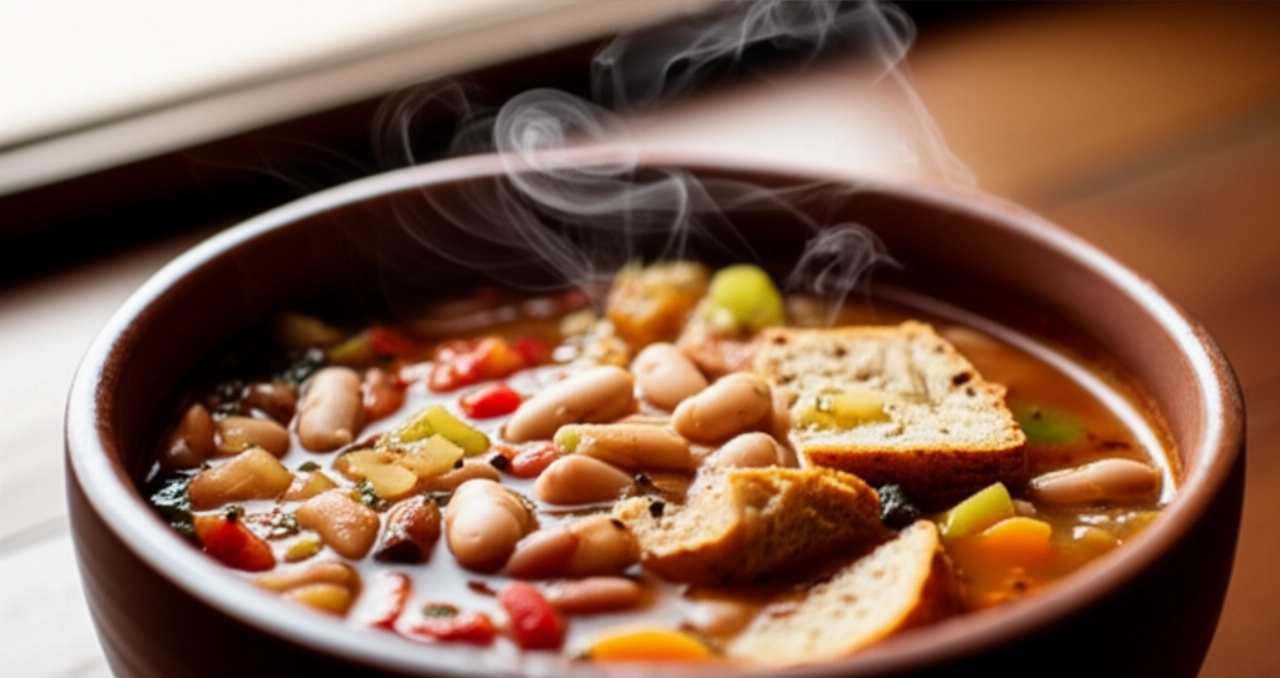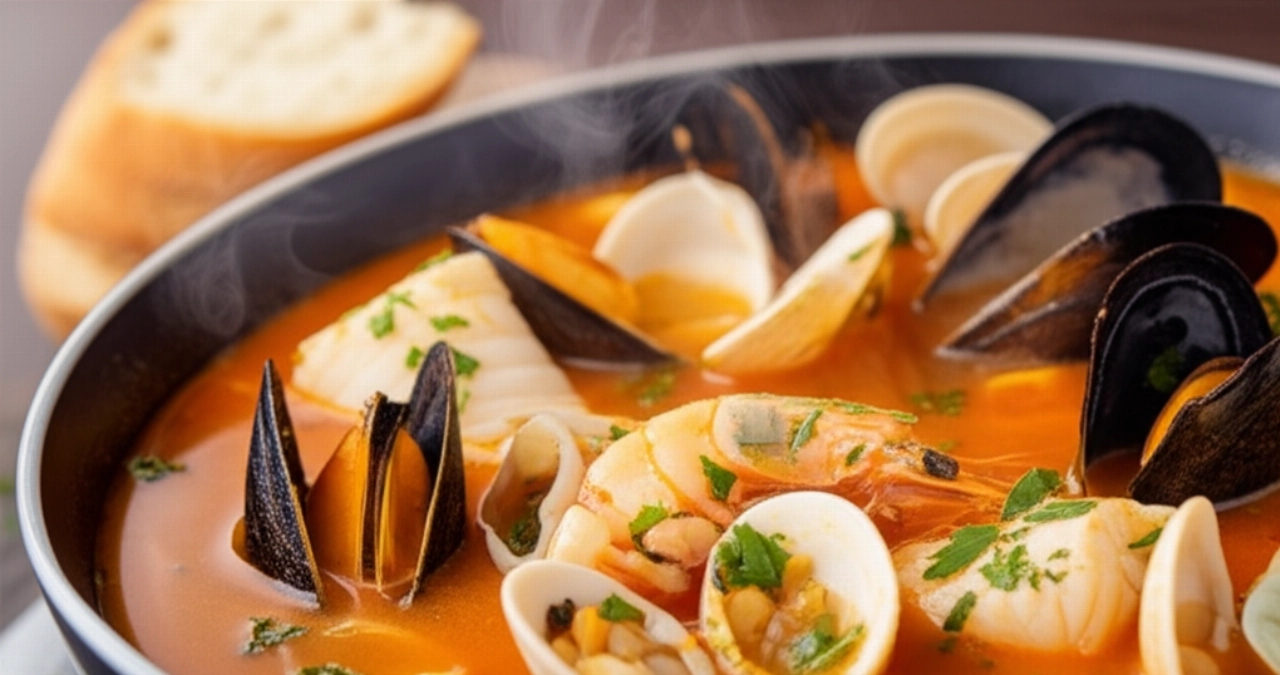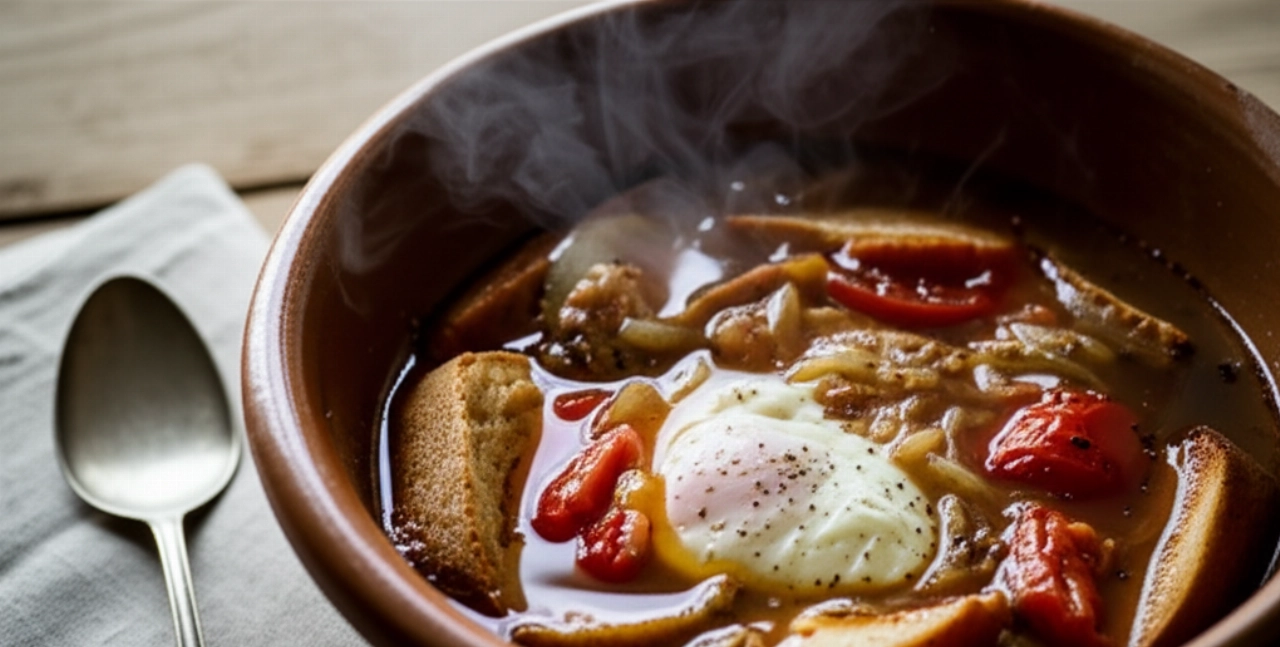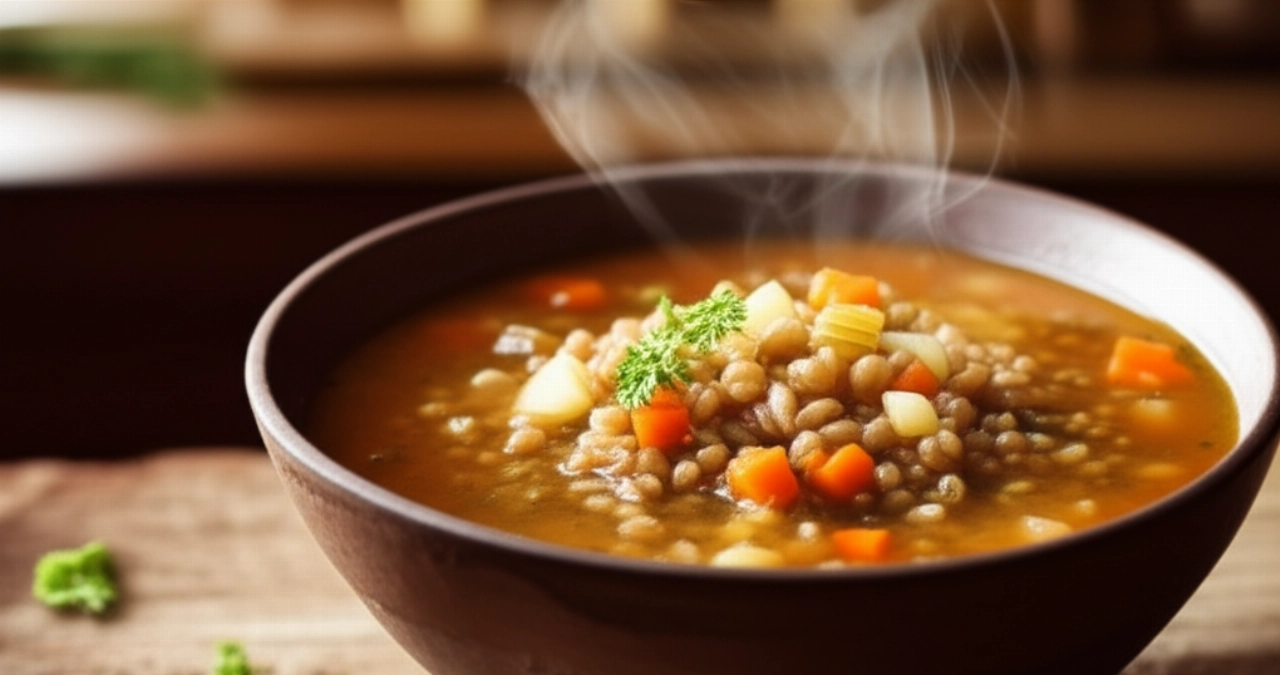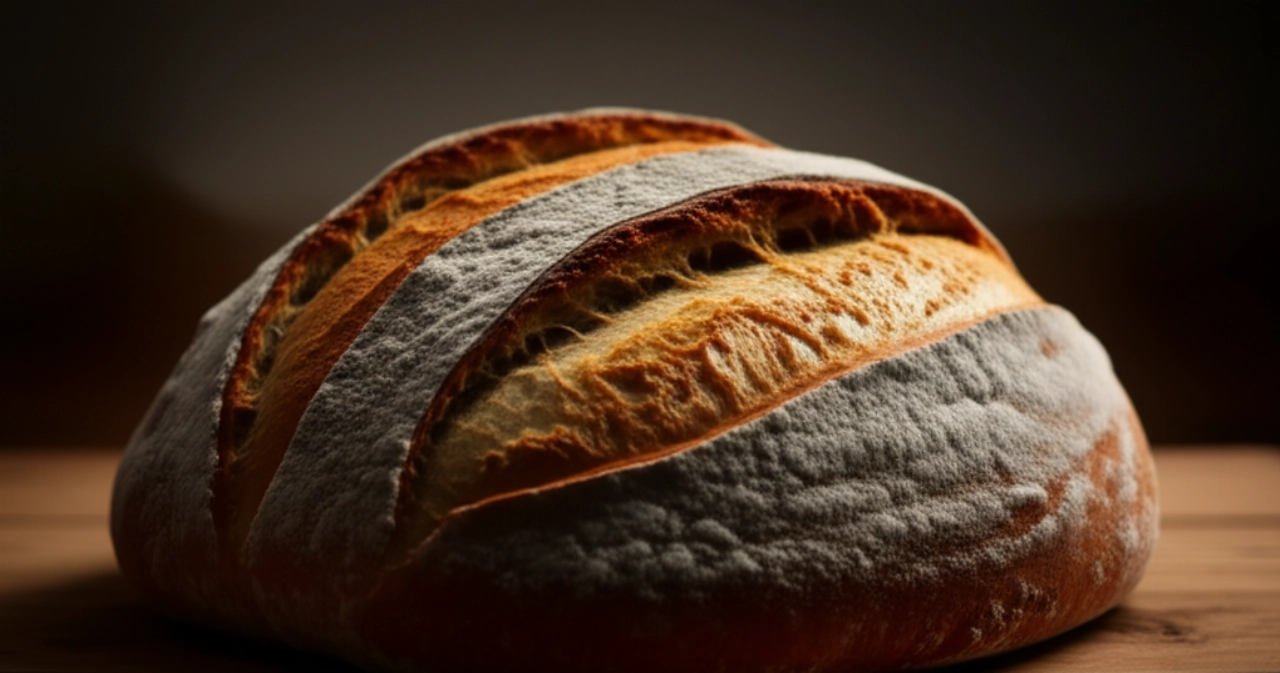Imagine the enveloping aroma of a dish that tastes of mountains, tradition, and cozy winter evenings, perhaps in front of a crackling fireplace. I'm talking about Seupa à la Vapelenentse, a true hymn to Aosta Valley cuisine, a dish that warms your heart and soul.
But how many times have you tried to replicate a traditional recipe and the result wasn't what you hoped for? Perhaps a soup that was too watery, or bland, or that didn't 'bind' as it should, leaving you with a sense of frustration and the fear of having wasted precious time and ingredients.
Fear not! Today, I'll take you by the hand into the heart of Aosta Valley cuisine to reveal all the secrets of authentic Seupa à la Vapelenentse. You won't just find a list of ingredients, but a real guide, full of tricks and tips, for a dish that will make you feel at home, guaranteed. Success is just a spoonful away!

Smart Ingredients: The Choice That Makes the Difference
For a Seupa à la Vapelenentse that makes you say 'Wow!', the quality of the ingredients is fundamental. It's not just a list, but a reasoned selection, the 'why' behind every choice.
- Stale Bread (rye or homemade): This is the real star! Do not use fresh bread; it wouldn't absorb the broth correctly. Stale bread, preferably a few days old, creates that unique, soft yet compact consistency that blends with the other flavors.
- Savoy Cabbage: Savoy cabbage, with its robust leaves and slightly bitter taste, is the only possible choice. Do not use other types of cabbage; they would alter the aromatic profile and the final consistency of the dish.
- Fontina DOP: No compromises here! Fontina DOP is the stringy, flavorful heart of the soup. Its medium aging (about 3 months) guarantees a perfect balance between sweetness and savoriness, and impeccable melting. Don't settle for similar cheeses; you wouldn't get the same result.
- Meat Broth (or rich vegetable broth): Broth is the vehicle of flavor. A good homemade meat broth (or a carefully prepared vegetable broth) is essential to give depth to the dish. Avoid industrial bouillon cubes; they would distort the authentic taste.
- Alpine Butter: A final touch of high-quality butter, perhaps from an alpine pasture, will enhance all the flavors and give the soup an inviting sheen.
- Fresh Sage: A few sprigs of fresh sage, sautéed in butter, add an unmistakable aroma that pairs divinely with the cabbage and cheese.
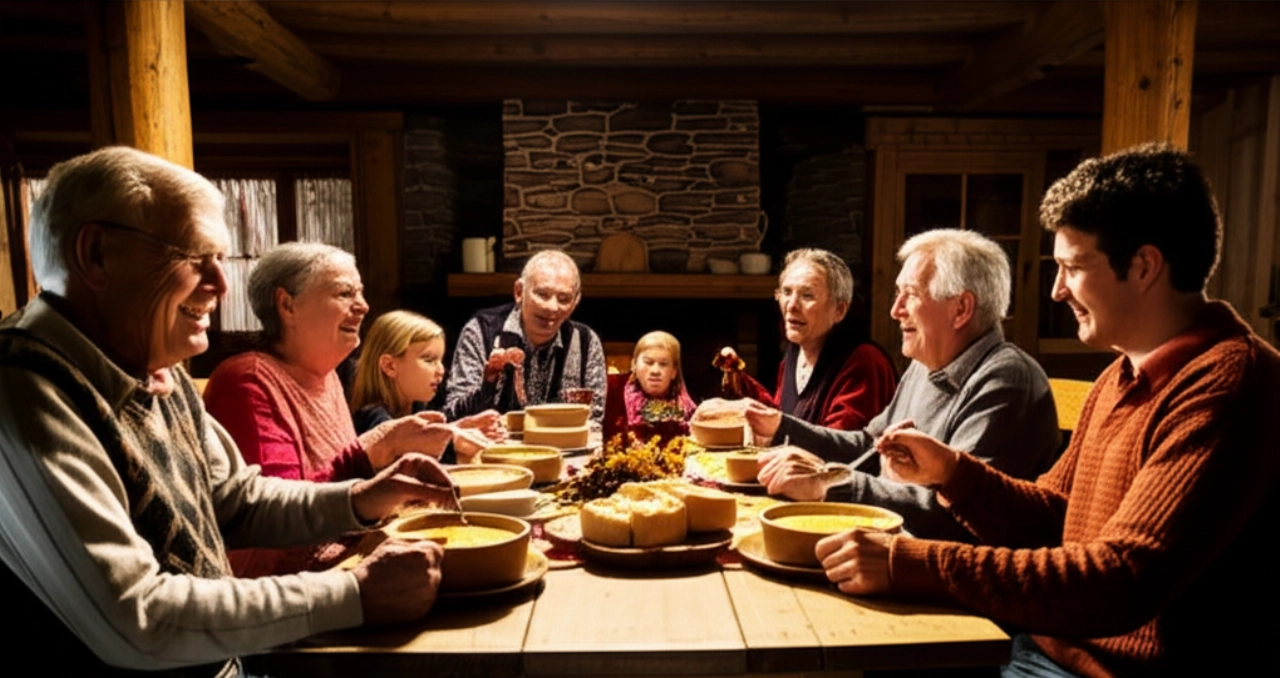
The 3 Mistakes That Ruin Seupa (and How to Avoid Them)
As a true guardian of the kitchen, I warn you about the most common pitfalls that can compromise your Seupa. Learning from others' mistakes is the first step towards success!
- Using Fresh or Wrong Bread: If the bread is too fresh, it won't absorb the broth well, and the soup will be watery and not very compact. Always use stale bread, preferably rye or a good homemade bread.
- Not Cooking the Cabbage Properly: The cabbage must be boiled to the right point, neither too hard nor too soft. If it's too al dente, it will remain fibrous. If it's overcooked, it will fall apart and lose consistency. It should be tender but still have its structure.
- Skimping on Fontina or Using Non-DOP Fontina: Fontina is the soul of this dish. Using less cheese than required or a non-DOP Fontina means giving up the creaminess, stringiness, and authentic flavor that make this soup so special.
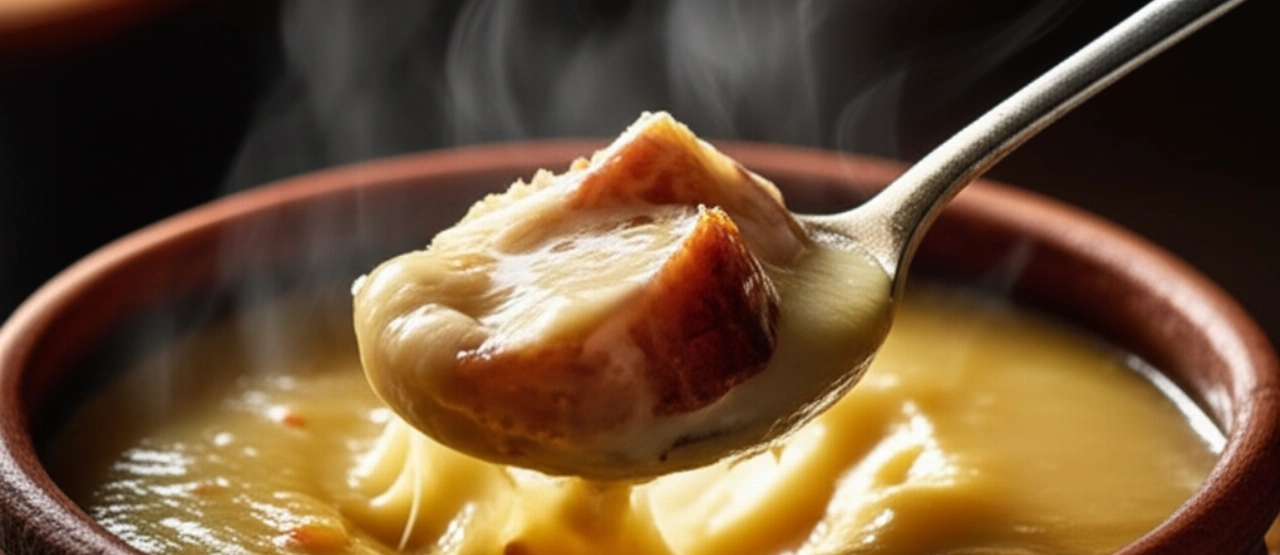
Grandma's Secret: The Touch That Makes Seupa Unforgettable
My grandmother, a true master of Aosta Valley cuisine, always told me that the secret to a good Seupa à la Vapelenentse lies in patience and love for the ingredients. But there was a little trick she passed down to me that I want to share with you:
“After assembling the soup and before baking it, let it rest for at least 15-20 minutes at room temperature. This time allows the bread to absorb the broth even better and for the flavors to start 'marrying' each other, creating an even deeper symphony of taste during oven baking.”
A small gesture that makes a big difference, trust me!
Let's Prepare Seupa à la Vapelenentse Together: The Step-by-Step Guide
Now that you know all the secrets, let's get cooking! Follow these steps calmly and precisely, and success will be guaranteed.
Ingredients (for 4-6 servings):
- 300 g stale bread (rye or homemade), sliced about 1 cm thick
- 1 kg Savoy cabbage
- 400 g Fontina DOP, thinly sliced
- 1.5 liters hot meat broth (or rich vegetable broth)
- 80 g alpine butter
- A few fresh sage leaves
- Salt and freshly ground black pepper to taste
Required Tools:
- A large pot for boiling the cabbage
- An oven-safe dish (approx. 20x30 cm)
- A ladle
Instructions:
- Prepare the Cabbage:
Clean the savoy cabbage, removing the tougher outer leaves. Cut it into wide strips or coarse pieces.
Boil the cabbage in plenty of salted water for about 10-15 minutes, until tender but still firm.
Drain it very well and let it cool slightly. - Prepare the Broth:
Ensure you have hot broth readily available. If you are preparing it at the moment, salt it lightly. - Assemble the Soup:
Generously butter the bottom and sides of the baking dish.
Form the first layer with the slices of stale bread, covering the bottom well.
Distribute an abundant layer of boiled savoy cabbage over it.
Cover the cabbage with a generous layer of thinly sliced Fontina DOP.
Repeat the layers: bread, cabbage, Fontina, until all ingredients are used, finishing with a layer of Fontina. - Moisten with Broth:
Gently pour the hot broth over the soup, ensuring the bread is well soaked but without the soup 'swimming' in the broth. The broth should almost cover the last layer of Fontina. - The Resting (Grandma's Secret):
Let the baking dish rest at room temperature for at least 15-20 minutes. This step is crucial to allow the bread to absorb the liquids better and for the flavors to meld. - Prepare the Final Seasoning:
While the soup rests, in a small saucepan, melt the butter over low heat with the sage leaves. Let the sage release its aroma without burning the butter. - Bake:
Preheat the oven to 180°C (static).
Bake the dish for about 30-40 minutes, or until the surface is golden and the cheese is well melted and stringy. If you see it browning too quickly, cover with aluminum foil. - Serve:
Once out of the oven, pour the melted butter with sage over the surface of the soup.
Let it rest for 5 minutes before serving, so the flavors settle and the soup will be easier to portion.
Tips and Frequently Asked Questions about Seupa à la Vapelenentse
Here are some of the questions I'm asked most often, with my "grandma-chef" answers to clear up any doubts.
Can I use another cheese instead of Fontina?
For authentic Seupa à la Vapelenentse, Fontina DOP is irreplaceable for its flavor and consistency. If you absolutely can't find it, you could opt for a similar alpine cheese, like a young Gruyère or Emmental, but the result won't be the same. I strongly advise you to seek out Fontina DOP!
Can I prepare Seupa in advance?
Absolutely yes! You can assemble the soup in the baking dish (up to point 5 of the instructions) and store it in the refrigerator for several hours or even a day. Before baking, let it return to room temperature for at least 30 minutes. In fact, sometimes prolonged resting enhances the flavors!
Can I freeze Seupa à la Vapelenentse?
Technically yes, but I advise against it. The bread tends to lose its ideal consistency after thawing, and the Fontina might not melt as stringily. This soup is best enjoyed freshly made or, at most, the next day, gently reheated.
What is the best type of cabbage to use?
Without a doubt, savoy cabbage. Its robust leaves and slightly bitter taste pair perfectly with the sweetness of the bread and the savoriness of the Fontina. Other types of cabbage (like cauliflower or broccoli) would not yield the same result in terms of flavor and consistency.
Why is my Seupa too watery?
This is a common mistake! It could be due to two factors: the bread wasn't stale enough and didn't absorb the broth well, or you added too much broth relative to the amount of bread and cabbage. Make sure the bread is well soaked but that the soup isn't submerged in liquid.
An Embrace of Flavor and Tradition
There you have it! Now you don't just have a recipe, but all the secrets to bring a dish to the table that tastes of home, mountains, tradition, and love. Seupa à la Vapelenentse is not just a soup; it's an experience, a warm embrace that envelops you.
Don't be afraid to experiment. Cooking is an act of creativity and generosity. But start with this solid and foolproof base, and you'll see that applause won't be lacking. It will be your new favorite comfort food!
Have you tried our recipe? We're curious to see your masterpiece! Leave a comment below, tell us how it went, or share a photo on Instagram by tagging @SearchRecipes. If you loved this soup, you can't miss our recipe for Carbonada Valdostana, another robust classic, or for a typical dessert like Monte Bianco. The kitchen awaits you!
